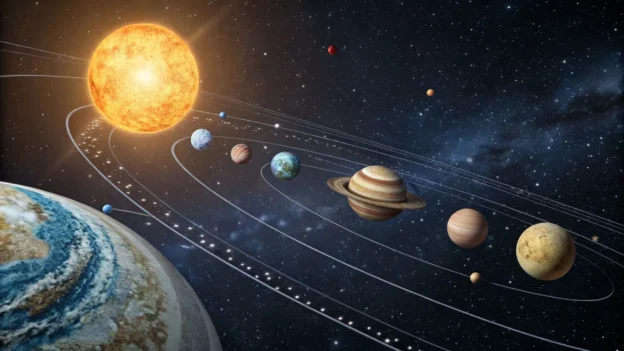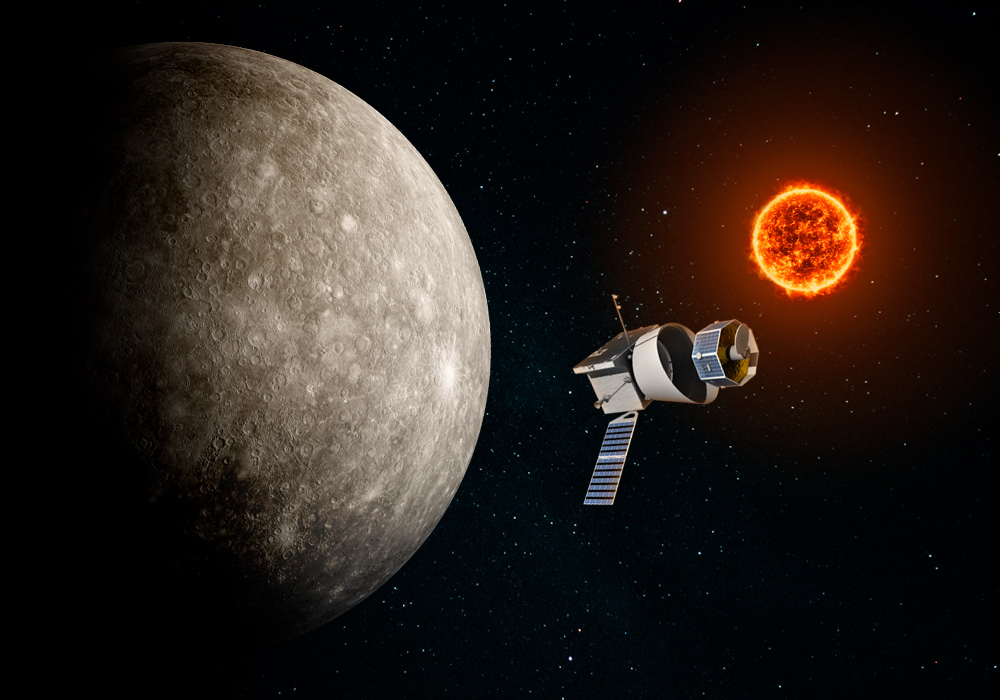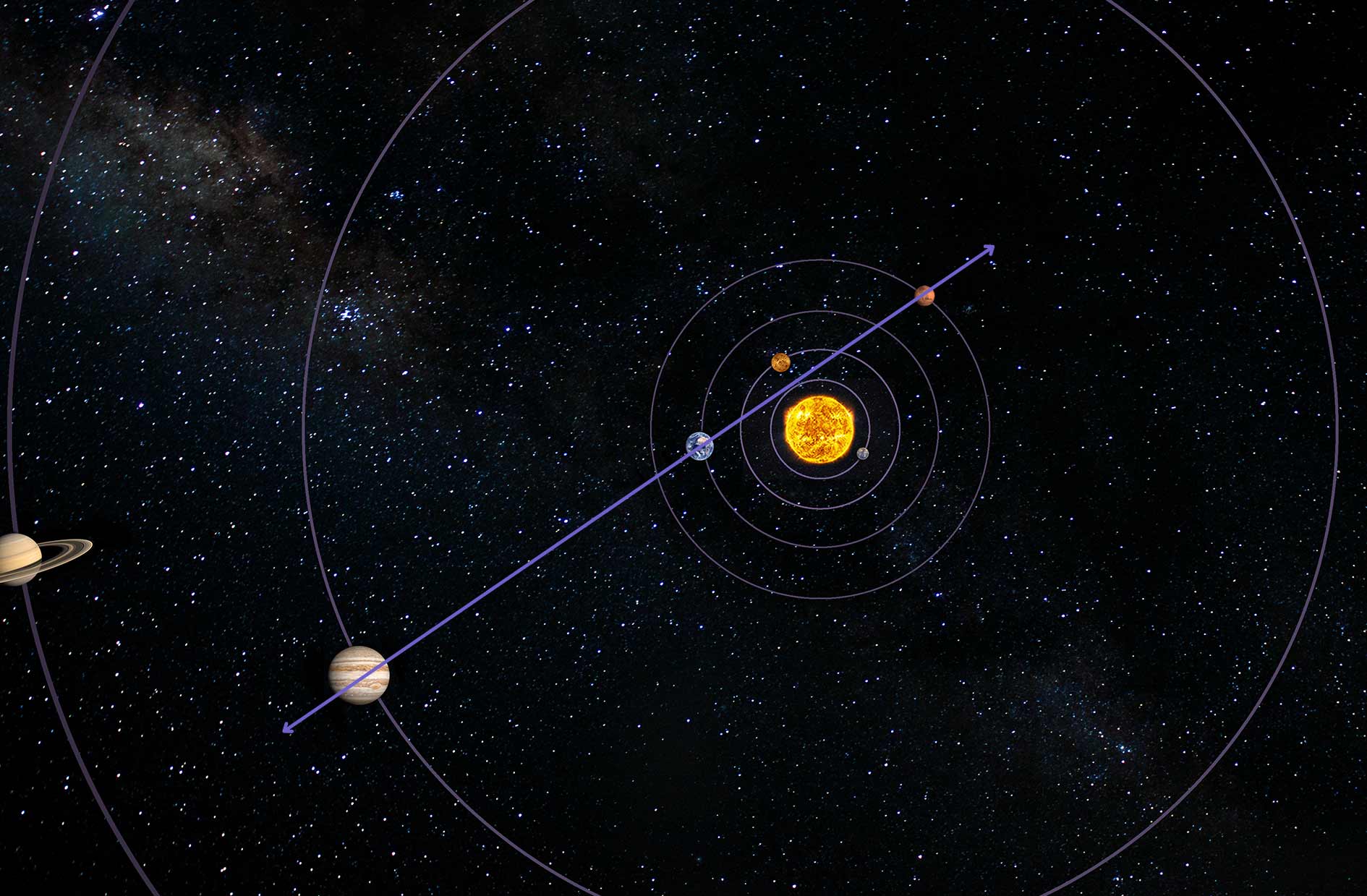When people think of planet-watching and See Planets Without a Telescope, they often imagine powerful telescopes, observatories, and advanced equipment. But here’s a little cosmic secret — you don’t need a telescope to see planets. In fact, with just your naked eyes, you can spot several of our solar system’s most beautiful worlds, glowing like bright stars in the night sky.
From Venus, the dazzling “Evening Star,” to Jupiter and its mighty brilliance, planets are surprisingly easy to spot — once you know what to look for.
At Spaceyv, we’re all about helping you connect with the universe, no matter where you are. So in this article, we’ll show you exactly how to see planets without a telescope, when to look for them, and how to tell them apart from stars.
🌍 The Naked-Eye Planets You Can See
Did you know that five planets are easily visible without any special equipment? These are the naked-eye planets known since ancient times:
-
Mercury
-
Venus
-
Mars
-
Jupiter
-
Saturn
These are the same planets our ancestors used for navigation, mythology, and early astronomy — long before telescopes existed.
Let’s explore how to find each one and what makes them unique.
🌞 1. Mercury: The Elusive Wanderer
Mercury is the smallest and closest planet to the Sun — which makes it both fascinating and tricky to see.
🔭 When and Where to Look
-
Best seen just before sunrise or just after sunset.
-
Always stays close to the horizon, never venturing far from the Sun’s glow.
-
Appears only for a few days at a time during its greatest elongation — when it’s farthest from the Sun in the sky.
💡 How to Identify Mercury
Mercury looks like a small, bright dot low in the sky. It doesn’t twinkle as much as stars do, and it fades quickly as dawn breaks.
If you spot a tiny light right above the horizon during twilight — congratulations, you’ve seen Mercury without a telescope!
🌟 2. Venus: The Dazzling Evening Star
Venus is the easiest planet to spot — and the brightest object in the sky after the Moon and Sun.
Known as both the Morning Star and the Evening Star, Venus outshines everything else around it.
🔭 When and Where to Look
-
You can see Venus shortly after sunset in the west or before sunrise in the east.
-
It appears for weeks or months at a time, depending on its orbit.
-
During its brightest phase, Venus is so bright it can cast shadows on a clear night.
💡 How to Identify Venus
Venus shines with a steady white or pale yellow light — it doesn’t flicker like stars.
If you spot a bright “star” that dominates the twilight sky, you’re looking at Venus, our brilliant planetary neighbor.
🔴 3. Mars: The Red Warrior
Mars is famous for its reddish glow — easily visible to the naked eye when it’s near opposition (closest to Earth).
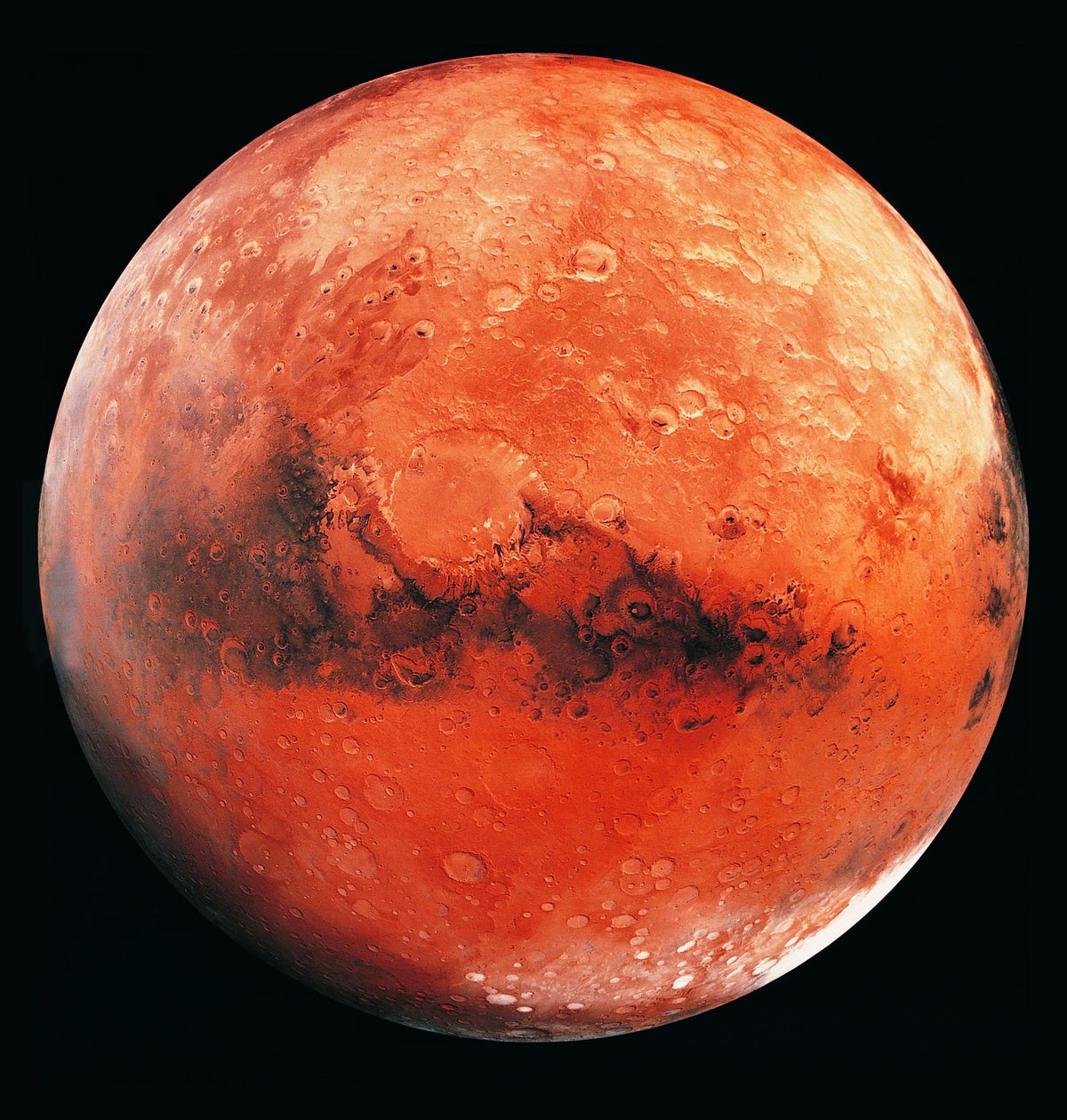
🔭 When and Where to Look
-
Best viewed every 26 months during its opposition, when Earth passes between Mars and the Sun.
-
You’ll find it glowing in the eastern sky after sunset, moving higher through the night.
-
In late-night or early-morning skies, Mars often appears high overhead.
💡 How to Identify Mars
Look for a steady orange-red dot that doesn’t twinkle.
Its unique color sets it apart from stars — and during its brightest phase, Mars can rival Jupiter in brightness.
🪐 4. Jupiter: The King of the Planets
Even without a telescope, Jupiter is breathtaking. It’s the second-brightest planet after Venus and the largest in our solar system.
🔭 When and Where to Look
-
Jupiter is visible for months at a time, typically rising in the east and setting in the west.
-
It’s best seen around opposition, when it’s opposite the Sun in the sky (visible all night long).
💡 How to Identify Jupiter
You can’t miss it — Jupiter is a bright, steady white light that outshines every star in the sky (except Venus when both are visible).
Under perfect conditions, you might even glimpse its four largest moons — Io, Europa, Ganymede, and Callisto — as faint dots nearby using binoculars.
💛 5. Saturn: The Golden Beauty
Saturn, with its iconic rings, is visible even without a telescope — though you won’t see the rings until you use one. To the naked eye, Saturn shines as a soft, golden light.
🔭 When and Where to Look
-
Visible for several months a year, usually rising after sunset and visible most of the night.
-
Best seen around opposition, like Jupiter.
💡 How to Identify Saturn
It appears as a gentle yellowish or golden star, steady and non-twinkling.
While dimmer than Jupiter, it stands out with its warm tone and calm glow.
🌌 How to Tell Planets Apart from Stars
Many beginners wonder — how can you tell a planet from a star?
Here’s a quick guide:
| Feature | Planets | Stars |
|---|---|---|
| Brightness | Usually brighter than stars | Vary in brightness |
| Twinkling | Don’t twinkle much | Twinkle constantly |
| Movement | Move slowly over days/weeks | Stay fixed relative to each other |
| Color | Often have distinct hues (red, gold, white) | Mostly white or bluish-white |
| Position | Found near the ecliptic (path of the Sun) | Scattered across the sky |
Pro tip: Planets always stay close to the ecliptic plane, the same path the Sun and Moon follow across the sky. If you see a bright “star” along that line — it’s probably a planet!
🌠 How to See Planets Without a Telescope
You don’t need fancy equipment — just a clear sky, some patience, and the right timing. Here’s how to get started:
1. Know When to Look
Planets are visible at different times of the year. Use astronomy apps like:
-
Sky Guide
These apps show real-time positions of planets and stars in your location.
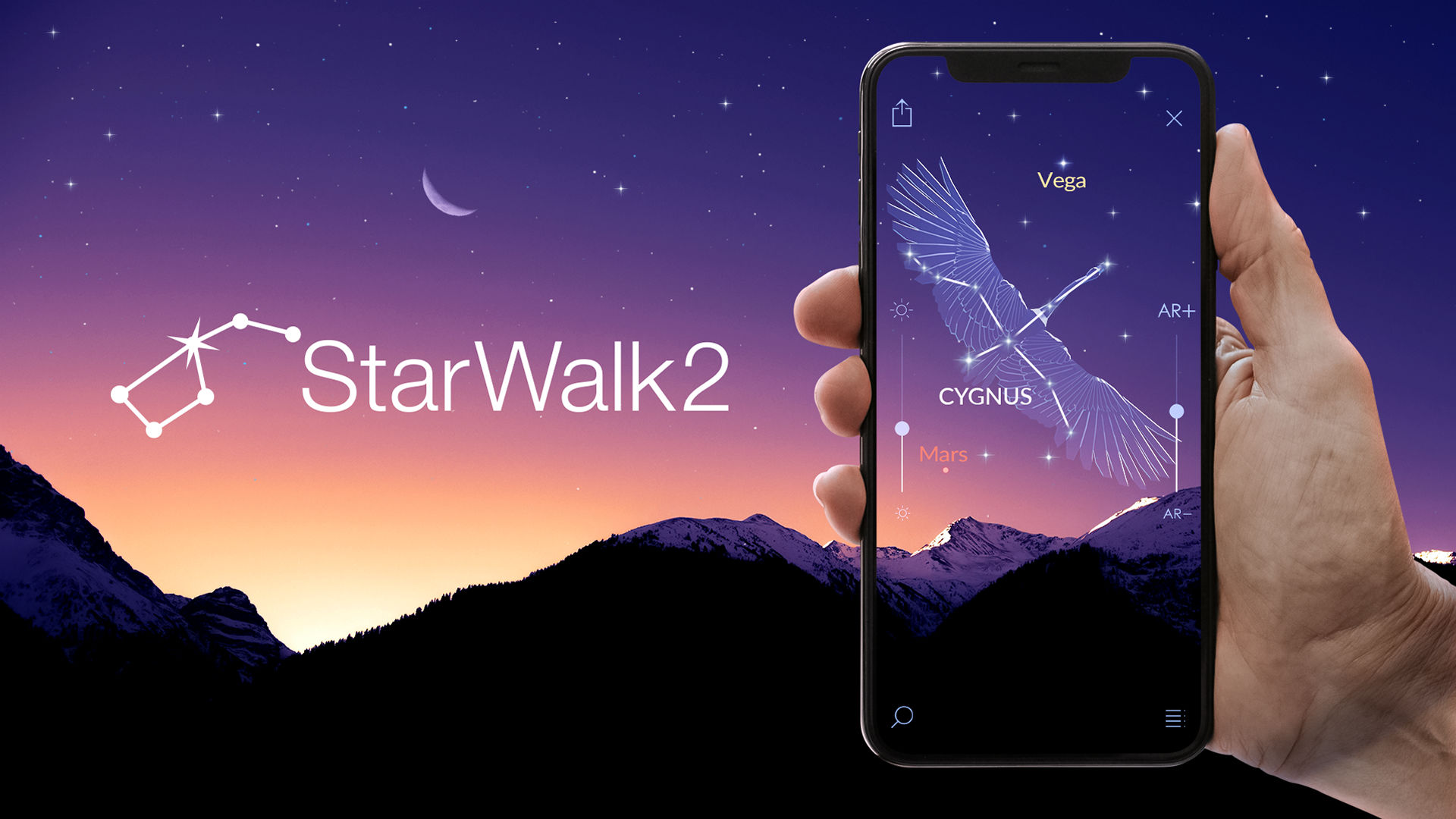
2. Find a Dark Sky Location
Even though planets are bright, light pollution can dull your view. Go somewhere away from city lights — a park, field, or beach is perfect.
3. Look Near the Ecliptic
All planets move along a similar path in the sky (the ecliptic). It’s roughly the same line the Sun and Moon follow — that’s where you should scan for planets.
4. Observe During Twilight
Planets like Venus and Mercury are easiest to spot just after sunset or before sunrise when the sky is still blue but dark enough for them to shine.
5. Use Binoculars for Bonus Detail
Though this guide is about seeing planets without a telescope, binoculars can enhance your view:
-
Jupiter’s moons become visible.
-
Saturn’s golden hue stands out.
-
Venus’s phases become noticeable.
Even a cheap pair of binoculars can transform your experience!
🪐 How the Sky Changes Throughout the Year
The visibility of planets changes depending on where Earth is in its orbit.
Here’s a general idea of which planets are easiest to see in different seasons (though it changes slightly every year):
| Season | Easiest Planets to See |
|---|---|
| Winter | Venus, Jupiter, Mars |
| Spring | Mercury, Venus, Saturn |
| Summer | Mars, Jupiter, Saturn |
| Autumn | Mercury, Venus, Jupiter |
Keep in mind that Venus and Jupiter are usually visible for much of the year, while Mercury requires precise timing.
🌙 The Best Time to Watch All Five Planets Together
Every few years, a rare event happens — all five visible planets appear in the sky at the same time.
During these alignments, you can trace a line of bright dots across the horizon — each one a different planet in our solar system.
If you ever get a chance to witness one, don’t miss it! These alignments are awe-inspiring and remind us how connected our celestial neighborhood really is.
🧭 Ancient Astronomy: How Our Ancestors Found the Planets
Long before telescopes, ancient civilizations tracked planets by observing their slow, steady movement across the night sky.
-
Babylonians used planetary cycles for calendars and omens.
-
Greeks called them “wandering stars” (the word planet comes from the Greek planētēs, meaning “wanderer”).
-
Maya and Inca astronomers precisely recorded Venus’s movements.
-
Arabic astronomers named many stars and refined planetary models centuries before modern science.
Their eyes alone — trained and patient — were their instruments. And you can do the same today.
💫 Fun Facts About Naked-Eye Planet Viewing
-
Venus can be seen even in daylight if you know where to look.
-
Jupiter and Venus sometimes appear so close they look like one bright object — a “planetary conjunction.”
-
Mars looks red because of iron oxide (rust) on its surface.
-
Saturn’s rings make it reflect sunlight more softly, giving it that golden hue.
-
Mercury is the hardest to spot — but seeing it feels like an achievement for any skywatcher.
🧠 Quick Tips to Enhance Your Planet-Spotting Experience
-
Use a Sky Map App – It tells you exactly where each planet is tonight.
-
Check Weather Conditions – Clear skies and low humidity offer the best visibility.
-
Avoid the Moon’s Bright Phase – A full moon can drown out fainter planets.
-
Bring a Friend – Sharing discoveries makes it even more fun.
-
Be Patient – Let your eyes adjust to darkness for 10–15 minutes.
🌌 Beyond the Naked Eye: What You’ll See With Binoculars or a Small Telescope
While this article is about seeing planets without a telescope, once you’ve mastered naked-eye observation, you might want to enhance your view slightly.
Here’s what simple gear reveals:
-
Binoculars: See Jupiter’s moons, Saturn’s glow, and Venus’s shape.
-
Small Telescope: View Saturn’s rings, Jupiter’s cloud bands, Mars’s polar caps, and Venus’s phases.
Even a small investment in optical gear can deepen your appreciation of the solar system.
🌠 The Joy of Naked-Eye Astronomy
Seeing planets without a telescope is more than just an astronomical skill — it’s a connection to something timeless.
You’re seeing the same glowing worlds that ancient humans gazed upon thousands of years ago — with no instruments, no technology, just wonder and curiosity.
Every time you step outside and spot a planet shining among the stars, you’re not just observing the night sky — you’re participating in humanity’s oldest and most universal experience: looking up.
🌙 Final Thoughts: The Universe Is Closer Than You Think
So, can you see planets without a telescope?
Absolutely — and you should.
With the naked eye, you can trace the paths of five worlds across the heavens, each one a glowing reminder that we live in a vast, beautiful, and interconnected cosmic neighborhood.
At Spaceyv, we believe you don’t need advanced tools to experience the magic of the universe — just a sense of curiosity, patience, and wonder.
Next time you step outside at night, take a moment to look up.
That bright light might not be a star — it might be a planet, shining just for you.

